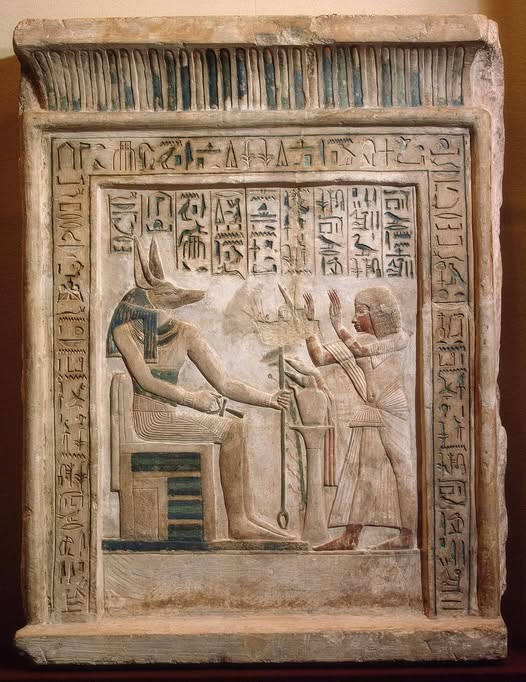
Stela of the Royal Scribe Ipy
This stela of Ipy, who held the тιтles “fan-bearer on the right hand [of the king]”, “royal scribe”, and “great overseer of the royal household”, carries a depiction of its owner making offering to Anubis, the embalmer deity, who is seated at the offering table. The introduction of this subject is an extremely important characteristic of the era.
In earlier times, depictions of deities in private tombs occurred only sporadically, while in the reign of Tutankhamun such scenes of worship began to occupy a central place in them. In this way, people were apologizing to the gods for the abolition of their cults under the previous ruler, Akhenaten. Stylistically the stela is also characteristic of Tutankhamun’s time, when works were produced, especially in the Memphite region, that were marked by the exceptional delicacy and softness of the relief.

The well-preserved painting in the stela of Ipy is testimony to the craftsman’s virtuoso skill in using colour to supplement and accentuate the relief. The owner of the stela was a notable personality, a witness to and participant in many of the most important events that took place in Egypt at the end of the 18th Dynasty.
In the final years of AmenH๏τep III’s splendid reign, he held a high position at court, in the temple of Ptah in Memphis and in that city’s administration.
During the Amarna revolution, he followed the king to the new capital, Akhetaten, where a tomb was constructed for him, but after the reinstatement of the traditional cults of the gods under Tutankhamen he returned to Memphis, taking up his former posts.
New Kingdom, late 18th Dynasty, reign of Tutankhamun, ca. 1332-1323 BC. Painted limestone. Dimensions: 95×71 cm. From Saqqara necropolis. Now in the State Hermitage Museum. ДВ-1072



